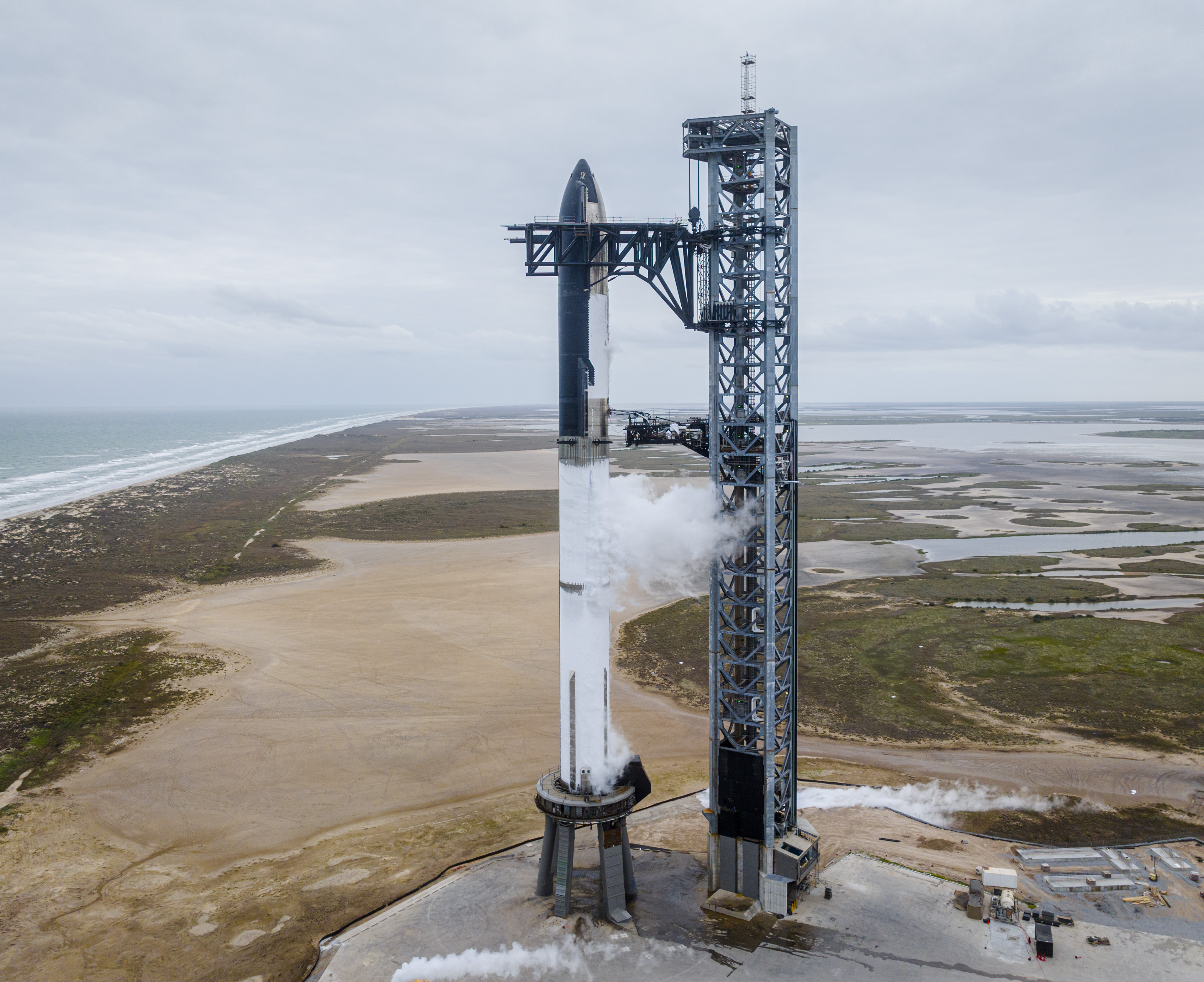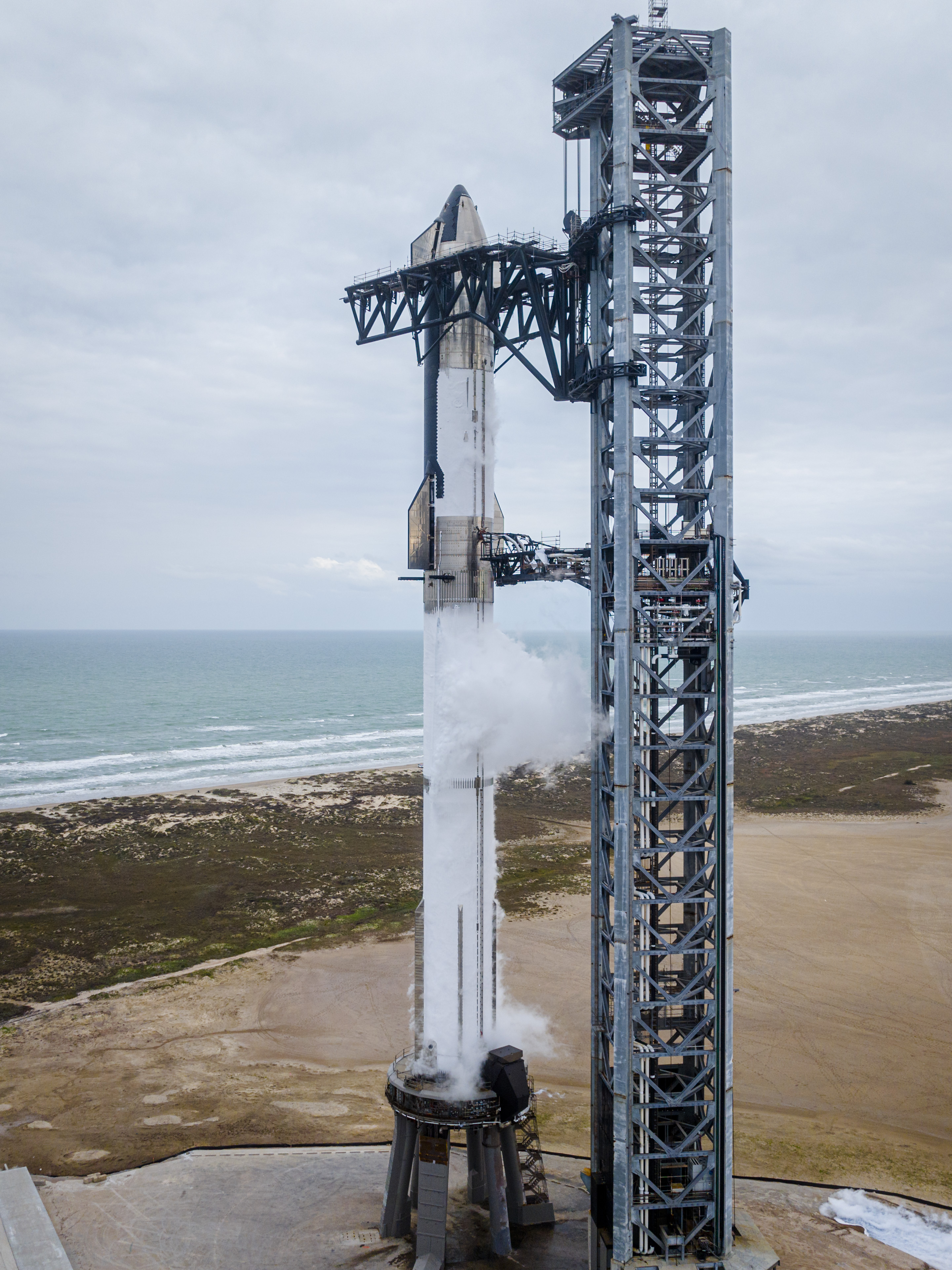
SpaceX fueled up a fully stacked Starship vehicle for the first time ever on Monday (Jan. 23), and dramatic photos preserve the process for posterity.
The 395-foot-tall (120 meters) Starship is an icy white in the new photos, which SpaceX released via Twitter on Tuesday (Jan. 24).
That's a dramatic color shift for the silvery Starship, brought on by the loading of more than 10 million pounds (4.5 million kilograms) of supercold liquid oxygen and liquid methane propellant into the stainless-steel vehicle's tanks.
Video: SpaceX ignites multiple engines on Starship Super Heavy booster for 1st time

The fueling was part of a landmark "wet dress rehearsal" that SpaceX performed on Monday at its Starbase facility in South Texas.
During wet dress rehearsals, mission teams practice many of the procedures they will perform on launch day. Monday's test will help SpaceX prepare for a very important Starship liftoff — the vehicle's first-ever orbital test flight, which company founder and CEO Elon Musk has said could take place as early as next month.
But this Starship vehicle, which consists of a first-stage prototype called Booster 7 and an upper-stage spacecraft known as Ship 24, must pass a few more tests before embarking on that milestone flight, as SpaceX explained.
Get the Space.com Newsletter
Breaking space news, the latest updates on rocket launches, skywatching events and more!
"After completing Starship's first full flight-like wet dress rehearsal, Ship 24 will be destacked from Booster 7 in preparation for a static fire of the Booster's 33 Raptor engines," the company said in another Tuesday tweet.
Static fires are another common prelaunch test, in which engines are briefly ignited while a vehicle remains anchored to the ground. To date, Booster 7 has static-fired a maximum of 14 of its 33 Raptors simultaneously. Ship 24 lit up all six of its Raptors last September.
SpaceX has big plans for Starship. Musk believes, for example, that the giant vehicle could soon make Mars settlement economically feasible. And he has said that Starship will eventually handle most, if not all, of SpaceX's spaceflight duties.
NASA is invested in Starship as well. For instance, the agency selected the vehicle to be the first crewed lander for its Artemis program, which aims to establish a permanent, sustainable presence on and around the moon by the end of the 2020s. A Starship will land astronauts near the moon's south pole for the first time in 2025 or thereabouts, if all goes according to plan.
Editor's note: This story was corrected at 1:30 p.m. ET on Jan. 26 to state that 10 million pounds is equivalent to about 4.5 million kilograms, not 450,000 kilograms.
Mike Wall is the author of "Out There" (Grand Central Publishing, 2018; illustrated by Karl Tate), a book about the search for alien life. Follow him on Twitter @michaeldwall. Follow us on Twitter @Spacedotcom or on Facebook.
Join our Space Forums to keep talking space on the latest missions, night sky and more! And if you have a news tip, correction or comment, let us know at: community@space.com.

Michael Wall is a Senior Space Writer with Space.com and joined the team in 2010. He primarily covers exoplanets, spaceflight and military space, but has been known to dabble in the space art beat. His book about the search for alien life, "Out There," was published on Nov. 13, 2018. Before becoming a science writer, Michael worked as a herpetologist and wildlife biologist. He has a Ph.D. in evolutionary biology from the University of Sydney, Australia, a bachelor's degree from the University of Arizona, and a graduate certificate in science writing from the University of California, Santa Cruz. To find out what his latest project is, you can follow Michael on Twitter.









